Arrive at Chandigarh railway station / airport, meet & greet by Aaradhana representative. Tour starts. Dinner & overnight at Shimla.
Spectacular Spiti Valley
Spectacular Spiti Valley
A picturesque paradise echoing with tranquility and spirituality, Spiti Valley is home to several Buddhist monasteries and stunning natural sites, most of which are unexplored and hence, unspoilt.
Itinerary
After breakfast visit famous temple of Bhimakali. Sarahan is a small village. It is the site of the Bhimakali Temple, originally known as Bhimadevi Temple, dedicated to the mother goddess Bhimakali, presiding deity of the rulers of the former Bushahr State. The temple is one of 51 Shakti Peethas. According to a legend, the manifestation of the goddess is reported to the Daksha - Yadnya incident when the ear of the Sati fell at this place and became a place of worship as a Pitha – Sthan. The village is known as the "Gateway of Kinnaur" it being near the old Indo-Tibetan Road. Sarahan is identified with the Shonitpur mentioned in Puranas. Sarahan Bushahr has been the summer capital of Bushahr kingdom, with Rampur Bushahr considered the winter capital. Depart for Sangla. After the initial dash over the hills, the road descends down to the Sutlej valley as we continue to the town of Rampur on the southern bank. The roads are carved on vertical rock faces at several locations giving itself a distinct identity. This road is popularly known as Indo-Tibet Highway. You’ll be welcomed by several hydroelectric power projects as you enter Kinnaur district, the major one at Karcham where a dam is built at the confluence of Baspa and Sutlej rivers. From Karcham we cross over the bridge and enter Baspa Valley to head towards Sangla.
Sangla Valley is located in the Kinnaur district of Himachal Pradesh. It is supposed to be one of the most beautiful valleys in the country. In Tibetan, the term Sangala means “pass of light” which refers to the valley receiving sunlight during the day. Visitors were prohibited to enter this region before because it was situated close to the Tibetan border; 25 years on and this valley has been explored by many enthusiasts. Spread over an area of over 40kms, it’s a magnificent sight to behold. Snow clad mountains surround you and you get to see the Kinner Kailash peak. The Baspa River flows through the valley and that is why it is also known as the Baspa Valley. Dinner & overnight at Sangla.
Chitkul is a beautiful village, located at a height of 3450 meter on the Tibet border by the side of the stunning Baspa River. It is known to be the last village of India from Tibet border and is located at a distance of 28 km from Sangla. The tourists who visit Sangla must make sure that they go for half day trip to Chitkul to enjoy the natural beauty of the place and to have a relaxing experience in the comfortable surroundings of Chitkul. The Baspa River is a fast flowing river that passes though the hills of Sangla. The surroundings of Baspa River provide an opportunity to view timely rainbows and brown trout. It is also an angle paradise for being home to a vast variety of fishes.
The famous Bering Nag Temple is the prime attraction in Sangla valley, which is visited by large number of people every year, especially between the months of August and September. It is a very important place of worship for Hindus. This beautiful temple is dedicated to Lord Jagas, also known as Lord Shiva, whom the local people worship for the wellbeing of the village and its inhabitants. Dinner & overnight at Sangla.
After breakfast you will be driven to Tabo which is situated on the left bank of river Spiti. Today is the day where we enter the Spiti Valley. The road initially descends to the Indo-Tibet Highway and continues on the left bank of Sutlej till Khab, the confluence of Spiti and Sutlej. We leave Sutlej behind and continue upstream of Spiti. Suddenly you can see the landscape has transformed with barren mountains all around. After an hour climb we reach Nako, another little village situated at an altitude of 3800m. The main attraction of this village is the artificial lake, which in the late spring is a sight to behold with pink flowers bloom all around the lake. After a brief stop at the lake we descend down to the river bed and continue upstream of Spiti crossing several villages.
On the way visit Gue village where the 500 yrs old mummy of Tibetan monk has been displayed. Gue Village in Spiti Valley, about 40 km from the Tabo Monastery, has a mummified monk, Sangha Tenzin, who had given up his life while meditating and is more than 500 years old. It is the only Buddhist Mummy in the world, that too, in a sitting position. There were other mummies also in Tibet which were buried by Tibetans just after the Chinese invasion. This mummy was discovered by the villagers in 1975 when an earthquake struck the region. Gue village is a restricted area and under the control of ITBP and very few people knew about the mummy until Anuj Singh (A freelance photographer) and his fellow biker Shahwar Hussain (An auto and travel magazine writer) first photographed it way back in the 90’s.
Flanked on either side by hills, it is one of the most important Buddhist monasteries regarded by many as only next to the Tholing Gompa in Tibet. It is also known as the Ajanta of the Himalayas. Tabo is the largest monastic complex of Spiti which has since been declared a protected monument under the Archaeological Survey of India. Dinner & overnight at Tabo.
High on Himalayas is the theme of the day. After breakfast we’ll do local sightseeing around Kaza in two halves...
Komic monastery also known as the Tnagyud Monastery has the honor of being one of the world’s highest motorable monastery at 4587 mts overlooking the Komic village and mountain peaks. As per the sacred ‘Gum Maro’ (Red Box) kept in the monastery, it was foretold in Tibet that a monastery would be built in Spiti in the backdrop of a mountain with the shape of a snow lion on the left and a beheaded eagle on the right hand side with 4 springs in the vicinity. The area in between these mountains was to be in the shape of the eye of a snow cock, which was foretold as the exact location where the Monastery would be built. On the basis of this, the area was to be named Komic (‘Ko’– Snow Cock, ‘Mic’– Eye).
In Komic, there are only about a dozen houses with the total population being between 50-60 people. Other than this, there are the Lamas staying at the monastery throughout the year. The most interesting part is to imagine people living at such an altitude where mobile phones don’t work, the climate is harsh, there is no source of basic amenities and the village is completely cut- off from the rest of the world during the winters due to snow from November to March. The winter characterizes harsh winds and heavy snow where temperatures fall to -30 degrees Celcius.
Later visit Langza Village, it is situated at an altitude of 4200 meters, is one of the most picturesque villages of Spiti located on the highland meadows with snow capped mountain ranges forming the backdrop. The village is adorned by a beautiful image of Buddha and an ancient temple more aptly called ‘Lang’ said to be the Abode of the Deities of the region and over 1000 years old. The beautiful peak of Chau Chau Kang Nilda makes the view of this village even more beautiful. Langza is also well known for its rich fossil reserves. Millions of years ago, Spiti lay submerged under the Tethys sea. Fossils of sea life can easily be found scattered close to the village.
Hikkim, situated at 4440m this village boasts the presence of Highest Polling Station & Highest Post Office in the World as well. Send postcards to your family and friends from here. If the season is right, gorge on freshly picked peas from the farms, run behind a Yak or sit endlessly watching the locals herd their cattle. After lunch will do full day excursion to Ki, Kibber, Hikkim, Komic & Langza village.
Khibber village : At an altitude of 4000 m is a beautiful village known as Khibber which is a few kms ahead of Kye Monastery. Sometime back this village had an authority of being the highest motorable village in Asia before Komic took the crown. Khibber is also home to Snow Leopards and sighting have happened in the surrounding mountains. Here you witness one of the masterpieces of modern construction – Kibber Chicham bridge built up on the gorge at a height of 4300m.
While driving back to Kaza will stop at Kye Monastery. Kye Monastery – The learning centre of Buddhism. Kye Monastery was established by a Buddha’s Disciple named Drompton in the 11th century and is one of the main training centres for lamas in this region. Situated at an altitude of 4115 metres and is also known as the ‘Little Tibet’. The Monastery specializes in certain specific subjects like sadhana, Buddha hood, Cosmology and Physiology and is the most frequented religious destinations for the Buddhists in the state along with the Tabo Monastery. The monastery is around 12 km north of Kaza in the Spiti valley above Kye village and you can also hike it easily. Dinner & overnight at Kaza.
After early breakfast drive to Chandertal, enroute will cross Kunzum La.
Kunzum Pass is a high mountain pass at an elevation of 4,590 m (15,059 ft) above the sea level, located on the eastern Kunzum Range of the Himalayas. It is one of India’s highest motorable mountain pass. It's the highest point in the Spiti Valley Road.
The road over the pass is just a dirt track leading upto the top of the hill. It links the Kullu Valley and Lahaul Valley with the Spiti Valley of Himachal Pradesh. The surface on this gravel road is often loose, especially along the sides of the road. Continue drive to Chandertal, or the Moon Lake.
Chandra taal is a beautiful lake in the heart of Peerpanjal mountain range at an altitude of about 4,300 metres in the Himalayas. “Chandra” (meaning Moon) and “Taal” (meaning lake). During the day, the lake appears blue in color, and a greenish tinge appears towards the evening. The lake is situated on a plateau (Samudra Tapu) overlooking the Chandra River which originates from a glacier near Bara-lacha-la. The lake is accessible on foot only for few months in a year, from May to September. Must do at Chandratal is the Parikrama of the lake, a circumambulation trek of 4Kms. As you reach the other side of the lake, a look backwards reveals the most breathtaking beauty that there is, high mountains of Chandra Bhaga peaks decorating the background of this lake makes one lose themselves in this myriad beauty. After sightseeing proceed to Manali enroute will cross Atal Tunnel. Continue drive to Manali, on arrival check in at hotel. Rest of the day free at leisure. Dinner & overnight at Manali.
Include/Exclude
Gallery
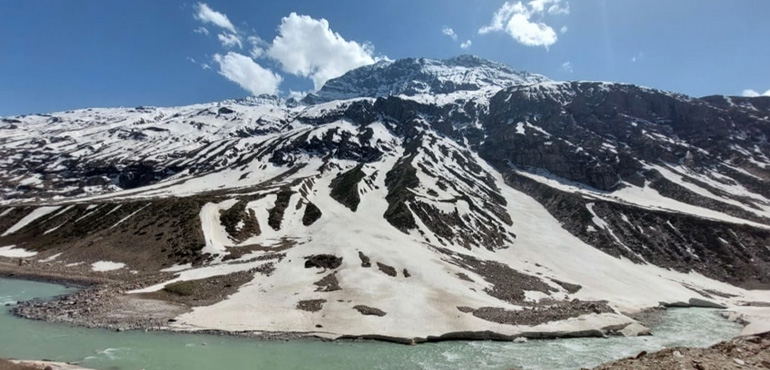
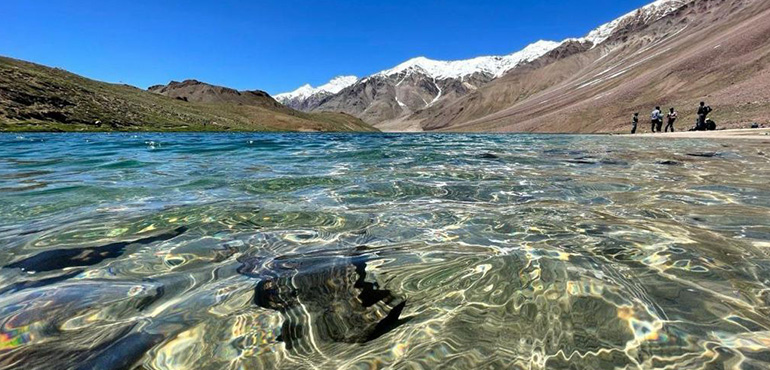
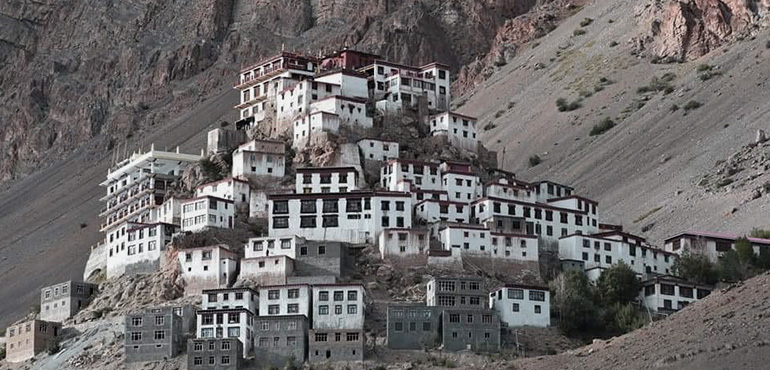
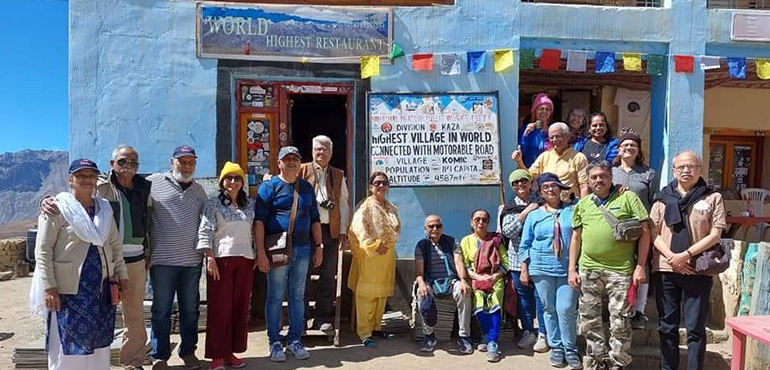
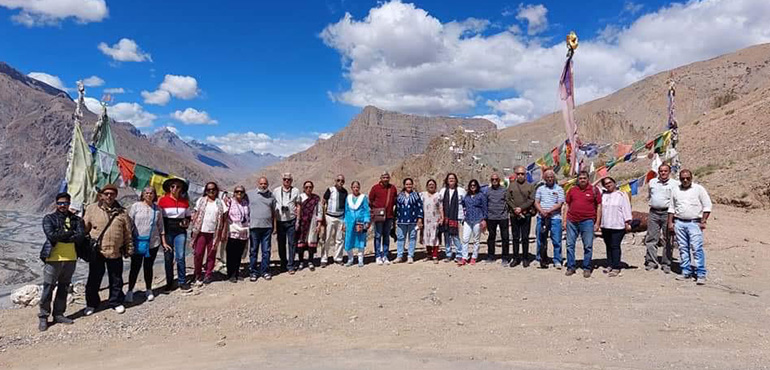
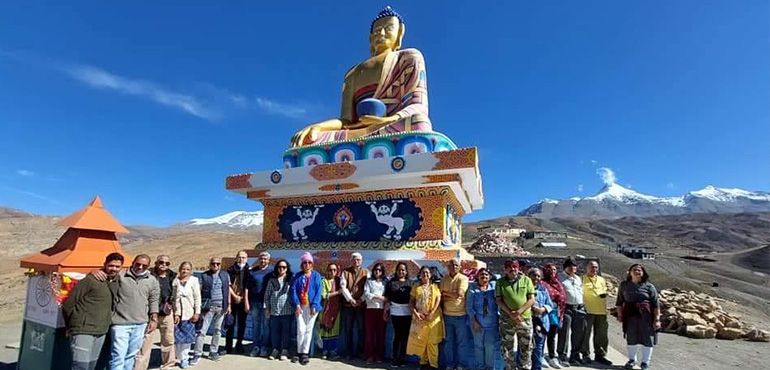
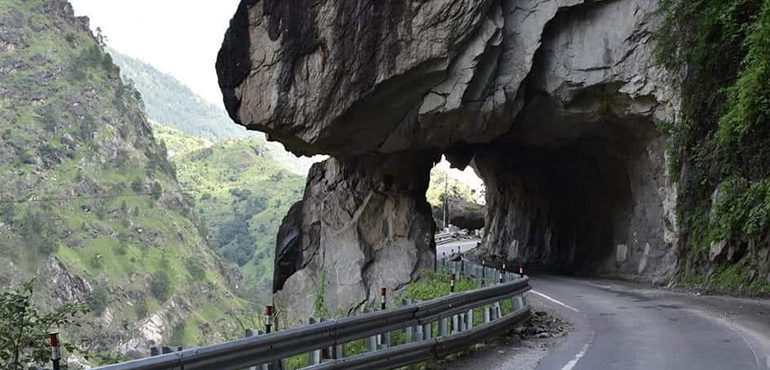
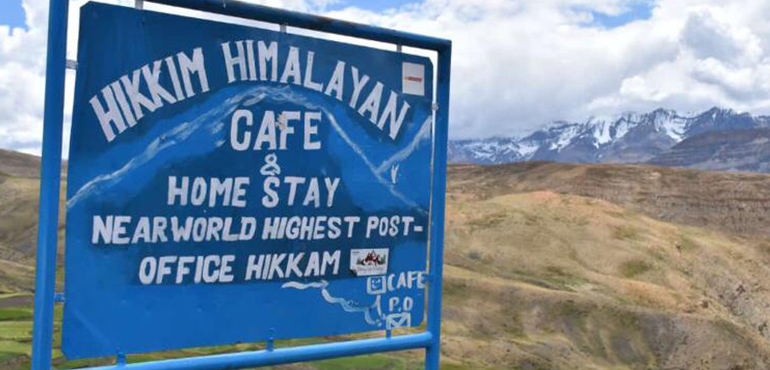
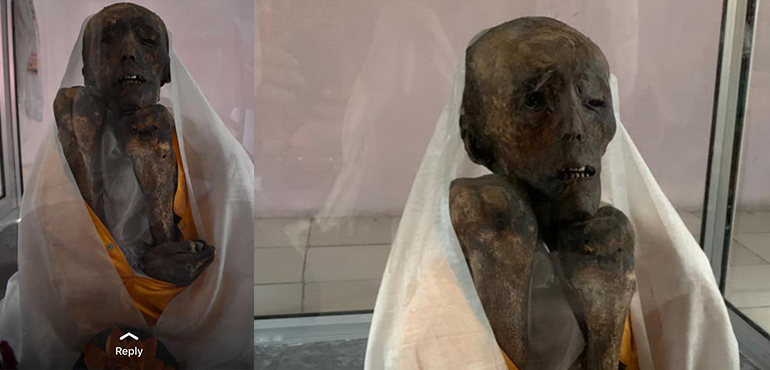
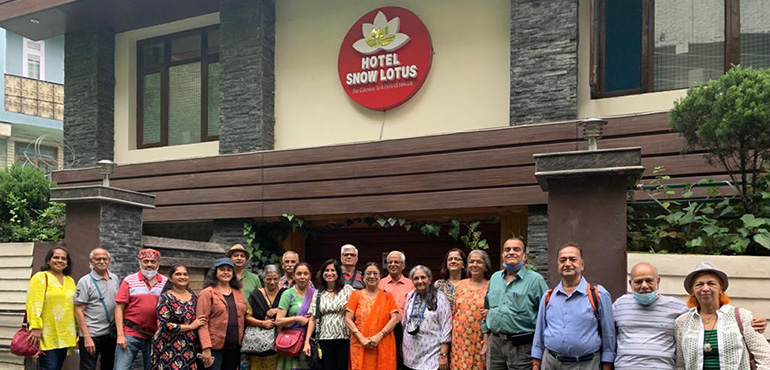
Group Discounts: For Special Group discount, contact any of our Office Representative
- Book before 03 Months :3,000/-
- Book before 02 Months: 2,000/-
- Book before 01 Month: 1,000/-
- Senior Citizen : Rs. 1,000/-
- Ex Clients: 1,000/-

In case of cancellation, the following conditions apply:
- Notice of less than 55 days : 20% of the tour cost will be taken as cancellation + Air ticket cancellation at actual
- Notice of less than 45 days : 40% of the tour cost will be taken as cancellation + Air ticket cancellation at actual
- Notice of less than 35 days : 60% of the tour cost will be taken as cancellation + Air ticket cancellation at actual
- Notice of less than 25 days : 80% of the tour cost will be taken as cancellation + Air ticket cancellation at actual
- Notice of less than 15 days : No refund + Air ticket cancellation at actual
If you still require any information or assistance, please do get in touch with us on:
Mumbai : 9595192103
Pune : 9595192105 / 9595192106
Unique sightseeing places
- Hatu Peak : located at an elevation of 3400 m/12000 ft above sea level
- Geu village : 550 year old mummy of Lama.
- Tabo Monastery : founded in 996 CE in the Tibetan year.
- Dhankar Monastery : situated at an elevation of 3,894 metres (12,774 feet). Overlooking the confluence of the Spiti and Pin Rivers
- Hikkim : world’s highest post office.
- Komic : supposed to be the highest village with a motorable road
- Kibber Village : high in the Spiti Valley in the at 4270 metres or 14,200 ft
- Kee Monastery : located on top of a hill at an altitude of 4,166 metres above sea level
- Kaza Monastery : situated at an elevation of 3,650 metres (11,980 ft) above mean sea level
- Kunzum la Pass : Kunzum Pass (Tibetan: Kunzum La, (el. 4,590 m or 15,060 ft), is a high mountain pass on the eastern Kunzum Range of the Himalayas.
- Rohtang Pass : elevation 3,978 m (13,050 ft)
- Chandratal Lake : The name of the lake originates from its crescent shape. It is situated at an altitude of about 4,300 metres in the Himalayas.
Tour Dates
Location
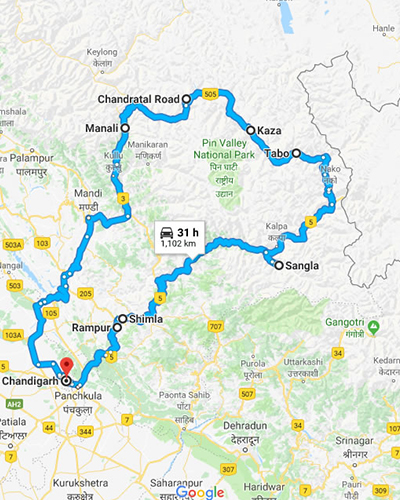
Customized Holidays
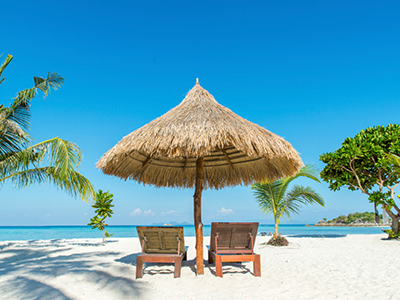
We help you design your dream vacation according to your specifications which include air, rail, car and hotel bookings. This tour can be for any date, any place and in any style that you want to travel. We guarantee, you will return with a feeling of happiness and enjoyment.

